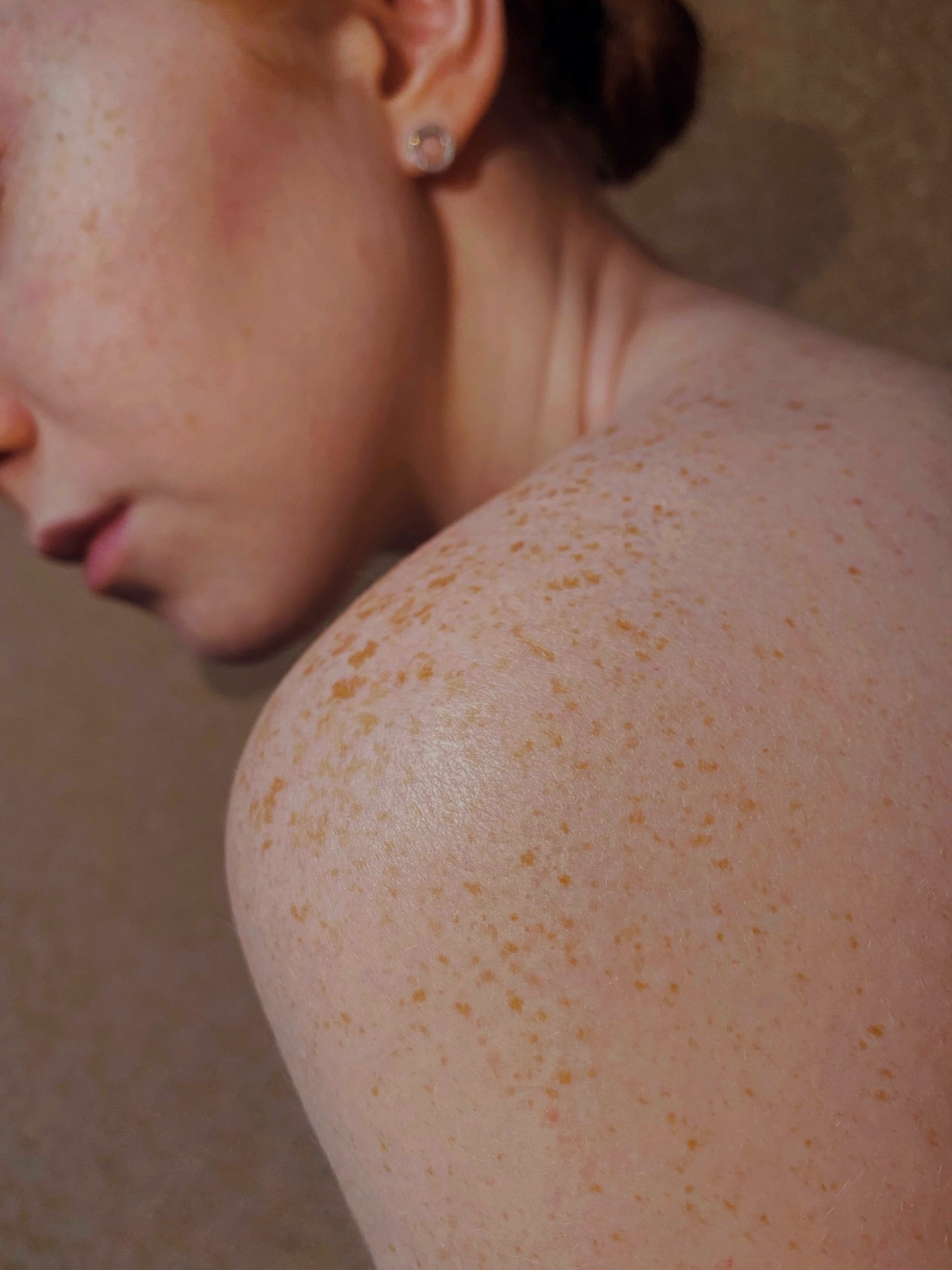Melanogenisis
21 February 2022
An intricate process that takes place within the Melanocyte cell. Melanin is produced in melanosomes, before being distributed into surrounding keratinocytes cells making their way to our skins surface. This melanin is our skins natural defence against UVR and trauma.
Signalled by the pituitary gland the MSH (Melanin Stimulating Hormone) is where it all starts. Initiating a series of biochemical events required for the formation of pigment granules.
This complicated process can be quite overwhelming at first so let’s break it down.
Pituitary gland
- Signals the MSH
- MSH (Melanin Stimulating Hormone) Signals Melanocytes and Keratinocytes
Tyrosinase enzyme
An enzyme that contributes to tyrosine oxidation, creating a Darker pigment.
Tyrosine
An Amino Acid that when oxidised contributes to melanin formation within the melanosome (darkening of pigment)

L-Dolpa
Family of Amino Acids that form pigment building block within the melanosome.
L-Dolpa Quinone
A metabolite of L-Dolpa that combines and von errs to form further pigment building blocks and determines the pigments colour.
(Eumelanin or Pheomelanin)
Melanin
Pigment is produced within the Melanosome.
Melanosome Transfer
Melanosomes containing Melanin transfer the pigment into keratinocytes.
The type of pigment and how much pigment is made is influenced by genetics and a variety of Intrinsic and Extrinsic factors.
These factors are also responsible for the disruption/mutation and acceleration of pigment production and distribution.
Influencers may include
- UVR
- Genetics
- Medications
- Heat
- Hormonal changes
- Inflammation
- Age
- Ethnicity
As Skin Specialists it’s important to take into consideration this process to better understand the pathway of the pigment being treated as well as the the associated influencers. This information together provides us with the foundation to provide the most effective outcome.
We also need to ensure our client is on the correct home care plan. One designed specifically to regulate and suppress the pigment process. How do we do this?
Concentrate on introducing ingredients such as Tyrosinase Inhibitors and Pigment Regulators. These are critical to skin preparation and required to prevent further pigmentation and pigment bounce back.
Some common examples of Tyrosinase Inhibitors include. (Interrupts/ Blocks the Tyrosinase enzyme)
- Kojic Acid
- Arbutin
- Azelaic Acid
- Ferulic Acid
- L- Ascorbic Acid
Some common examples of Pigment Regulators include: Regulates pigment throughout the different stages of melanin production and distribution)
- Niacinamide
- Brightening peptides
- Vitamin A
- Green Tea Extract
- glucosamine
Another Important note to remember: The higher the Skin Fitzpatrick a longer skin preparation time is required before treating with advanced treatments. A simple guide to follow is Fitzpatricks 1-2 prep for 4 weeks and Fitzpatricks 3-6 prep for a min 4-6 weeks.
So when next treating stubborn pigmentation think about how it got there and the process happening behind the scenes. What’s the most effective outcome you can achieve, And what’s the best plan of attack. Happy Pigment Busting! 👊🏻
Photo Types and the Risk Factors ⚠️
Skin colour is just one of the many genetic traits we obtain that makes us unique.
Each Photo Type responds to treatments and environmental factors differently. Some obtain higher protection qualities while other don’t. Some have an increased risk towards trauma and others don’t.
Having a higher Photo Type with a greater ability to acquire a tan isn’t necessarily the better skin to have. It’s how we look after our skin and respect it’s capabilities that gives us the best skin to have.
Each Photo Type comes with its own risk factors. Understanding these risk factors helps us to effectively treat and protect, lower the potential for any adverse responses during and post treatment and recommend the correct home care advice. It may even give you a better understanding of why skins present the way they do.
Let’s take a look at some possible risk factors for each Photo Type.
Photo Type 1-2
⚠️ High risk for skin cancers (MC1R Gene)
⚠️ High potential for Vascular damage
⚠️ High risk for Actinic Aging
⚠️ May pigment from trauma
⚠️ May scar if slow to heal
Photo Type 3-4
⚠️ Greater ability to acquire a tan
⚠️ High risk for pigmented skin conditions
⚠️ Possible risk for skin cancer (dependant on ethnicity mix)
⚠️ Risk for trauma, heat and chemically caused pigment.
⚠️ Potential for scarring and vascular damage.
Photo Type 5-6
⚠️ High risk for trauma heat and chemically caused pigment.
⚠️ High- extremely high risk for Keloid scarring
⚠️ High-extremely high risk for Hyper and Hypo pigmentation
⚠️ Low risk for solar pigmented skin conditions, actinic aging and vascular damage.
Next time your treating take a second to identify your clients Photo type and take note of their possible risk factors.
